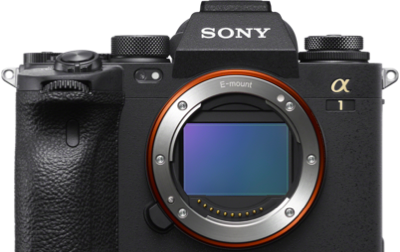The Underwater Photographer of the Year competition announced its winners and highly honored images, and among the lineup of stunning shots was this image, made by Ollie Clarke (@Ollie_Underwater) using his Sony Alpha 7R III with the Sony 28-60mm f/4-5.6 in an underwater housing. We were blown away by this stunning photograph and wanted to learn more about the story of the image. Continue reading to hear about Ollie’s experience and how he did it.
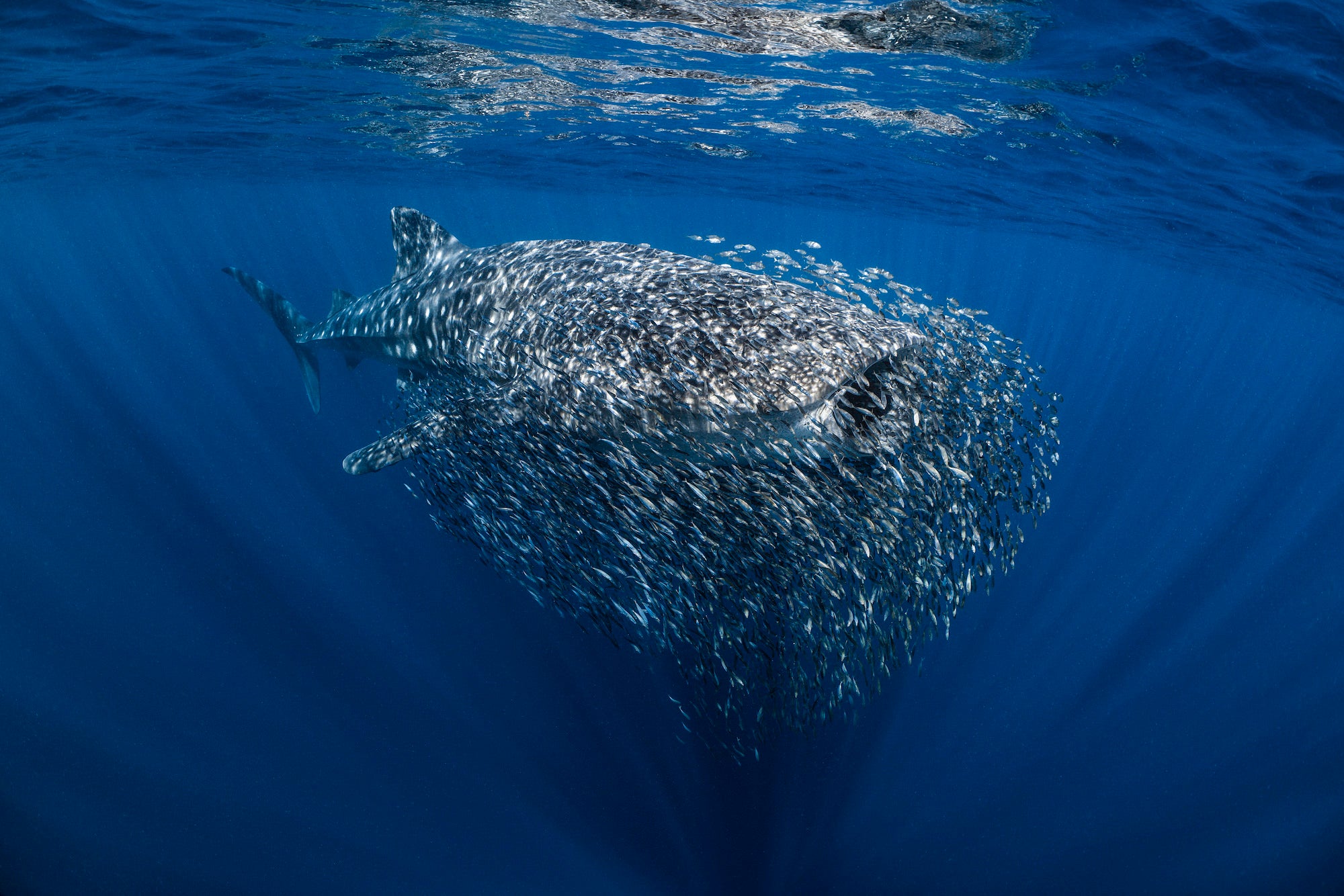
Photo by Ollie Clarke. Sony Alpha 7R III. Sony 28-60mm f/4-5.6. 1/250-sec., f/8, ISO 400
See how this photographer won British Underwater Photographer Of The Year for "The Swarm," a whale shark with a huge swirling bait ball moving around it.
My name is Ollie Clarke, I'm 30 years old and originally from Bognor Regis on the South Coast of England. After completing my studies in biological sciences I went on to travel and work in marine conservation and the diving industry, during this time I got hold of a camera and started to teach myself photography. By 2018 I decided I wanted to follow a career in underwater photography and got my first full frame setup, a Sony Alpha 7R III with a Nauticam housing. I now work as a photographer on the Ningaloo Reef (in whale shark tourism) where I'm out on the water everyday shooting big fish and swimming with marine megafauna.
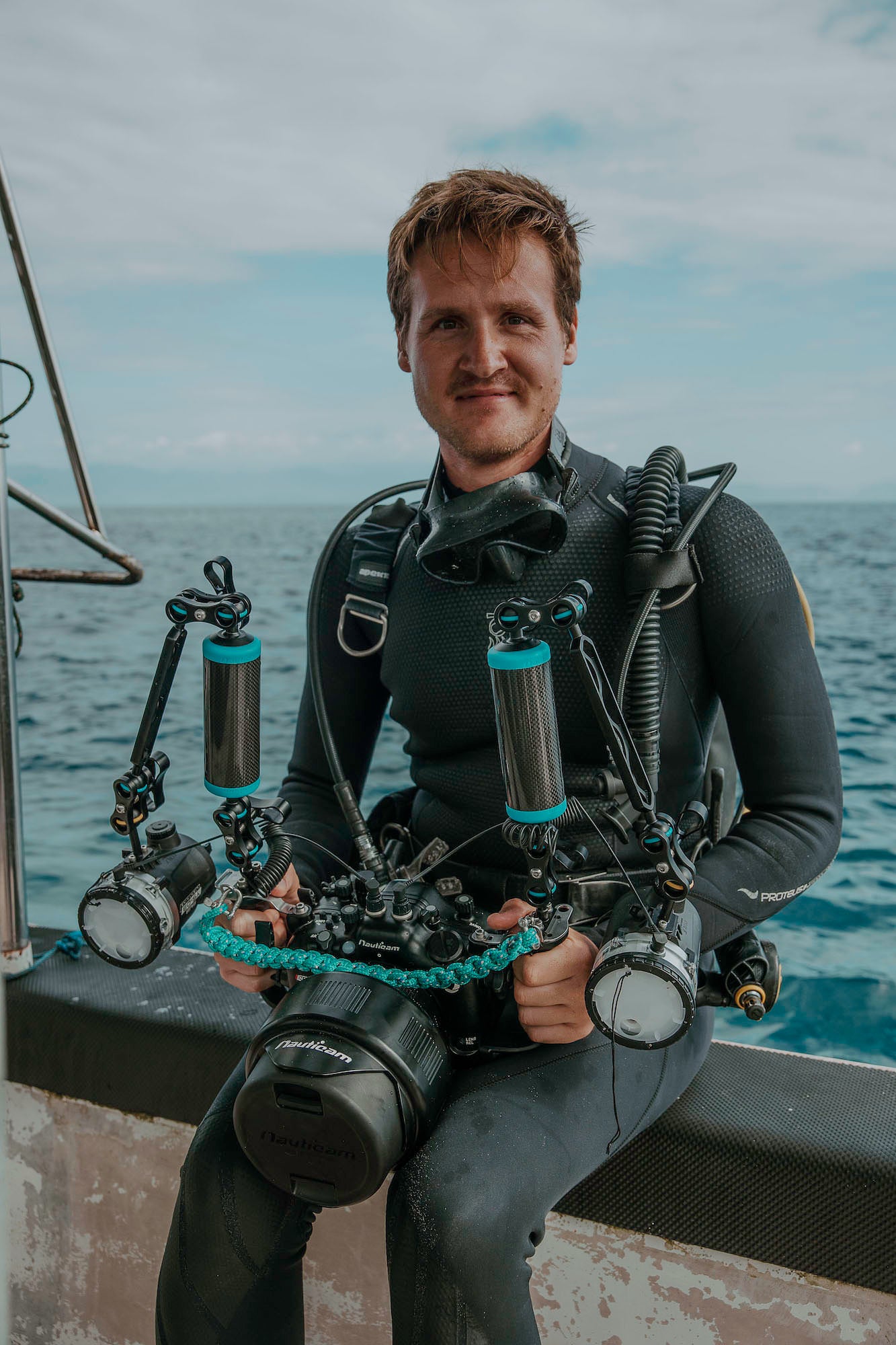
Photographer Ollie Clarke
The Award-Winning Image
I shot my image 'The Swarm' while at work in May 2022 on the Ningaloo Reef, Western Australia with Ocean Eco Adventures. Our aircraft spotted this whale shark swimming out in the deep blue off the Ningaloo coast and I'm always sent in first to find the shark and guide the boat on. As soon as I saw this whale shark I was excited to photograph it, quite often we encounter whale sharks accompanied by bait balls (schools of small fish) although this time the baitball was much larger than usual, absolutely surrounding the shark. However it was swimming quickly in deep water and after a few minutes it took a dive and we lost sight of it. Luckily it came back up and our spotter in the sky found it again, this time on the surface. I positioned myself where as best I could with some guidance from our aircraft and skipper, trying to predict where the shark would go and got my settings right and waited for the shark to come by. The shark came in just as I thought so I stayed as small and as still as I could, allowing the animal to pass by whilst the huge baitball swirled around the animal.
Whale sharks are deep water fish, spending most of their time way offshore in deep water. In the pelagic zone there is nowhere to hide, so often small fish will use them for shelter and even transport - they ride the bow wave of the whale shark as it swims through the water. As more and more fish gather around the shark, this sometimes attracts predators like trevally - I've even seen a sailfish hunting a bait ball around a whale shark! Usually the trevally will pick off the smaller fish when the whale shark is in deep water and retreat when it comes to the surface, giving them an opportunity to feed on plankton in the water column.
On this occasion, there were so many fish even the whale shark was taking advantage of the feast, they are often mislabelled as being purely plankton feeders, but they can actually feed on anything up to about 10cm. Here there were so many fish ahead of it, the whale shark would suddenly speed up and quickly open its mouth, creating some suction and gulping down some of the fish - the shelter becomes the predator! That's exactly what happened as the shark passed me making for a spectacular scene. I was overjoyed to get the shot as I knew I may not get another opportunity and I was right, the whale shark dived into much deeper water and we lost it shortly after.
An Underwater Photo Kit For Capturing Detail
I used a Sony Alpha 7R III with a Sony 28-60mm f/4-5.6 lens and Nauticam housing with a Nauticam wide angle conversion port, this converts 28mm to a super wide 130 degree field of view, whilst maintaining excellent sharpness. The Sony Alpha 7R III 45.2mp sensor was perfect for capturing all the detail in the scene and the 28-60mm is a perfect companion with the Nauticam WACP-1, focusing nice and quickly to get the shot during a very short window of opportunity. (Read more about Clarke's underwater photography kit for marine wildlife HERE.)
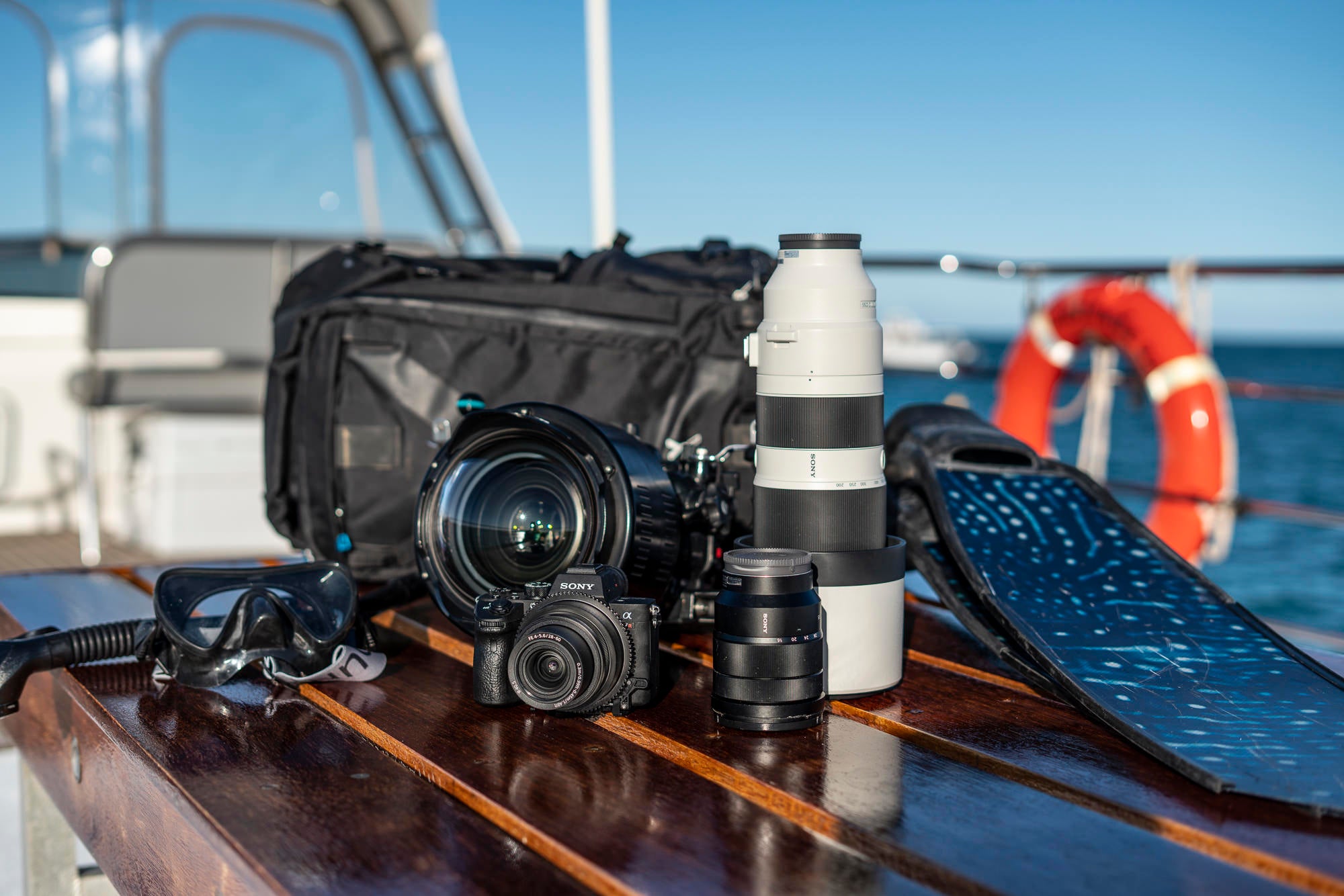
Ollie Clark's underwater photography kit for marine wildlife
My settings were: 1/250-sec., f/8 and ISO 400. Often, when I shoot underwater I use a smaller aperture, f/11 and above. But in deep blue water, there is less need for sharper corners and the small fish were moving quickly so I wanted to speed up my shutter to freeze all the motion surrounding the whale shark. The Alpha 7R III's sensor performs really well in low light. Even on a sunny day underwater you lose a lot of light, so I was able to keep my ISO relatively low at 400 to avoid too much noise.

Photo by Ollie Clarke. Sony Alpha 7R III. Sony 28-60mm f/4-5.6. 1/250-sec., f/8, ISO 400
For post-production, I use Adobe Lightroom Classic. For underwater imagery, the most important thing is color correction so shooting RAW is essential, allowing me to create accurate, natural colors. Otherwise I increased the contrast and clarity to add some drama to the image and then in Adobe photoshop remove some backscatter. Since this shot I've upgraded my setup a bit – I am now using a Sony Alpha 1, still with the 28-60mm and Nauticam housing/optics.
Follow Ollie on Instagram (@Ollie_Underwater) to stay up to date with his underwater adventures and imagery!
